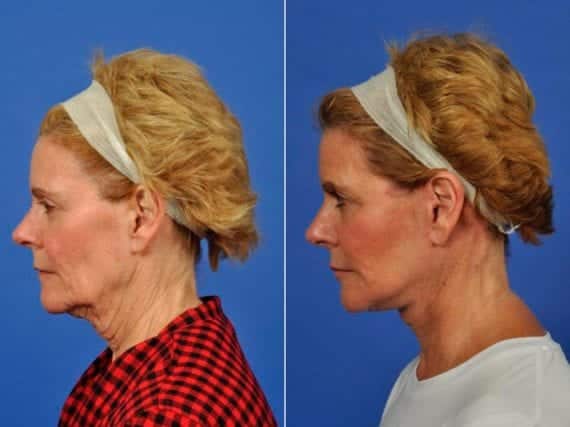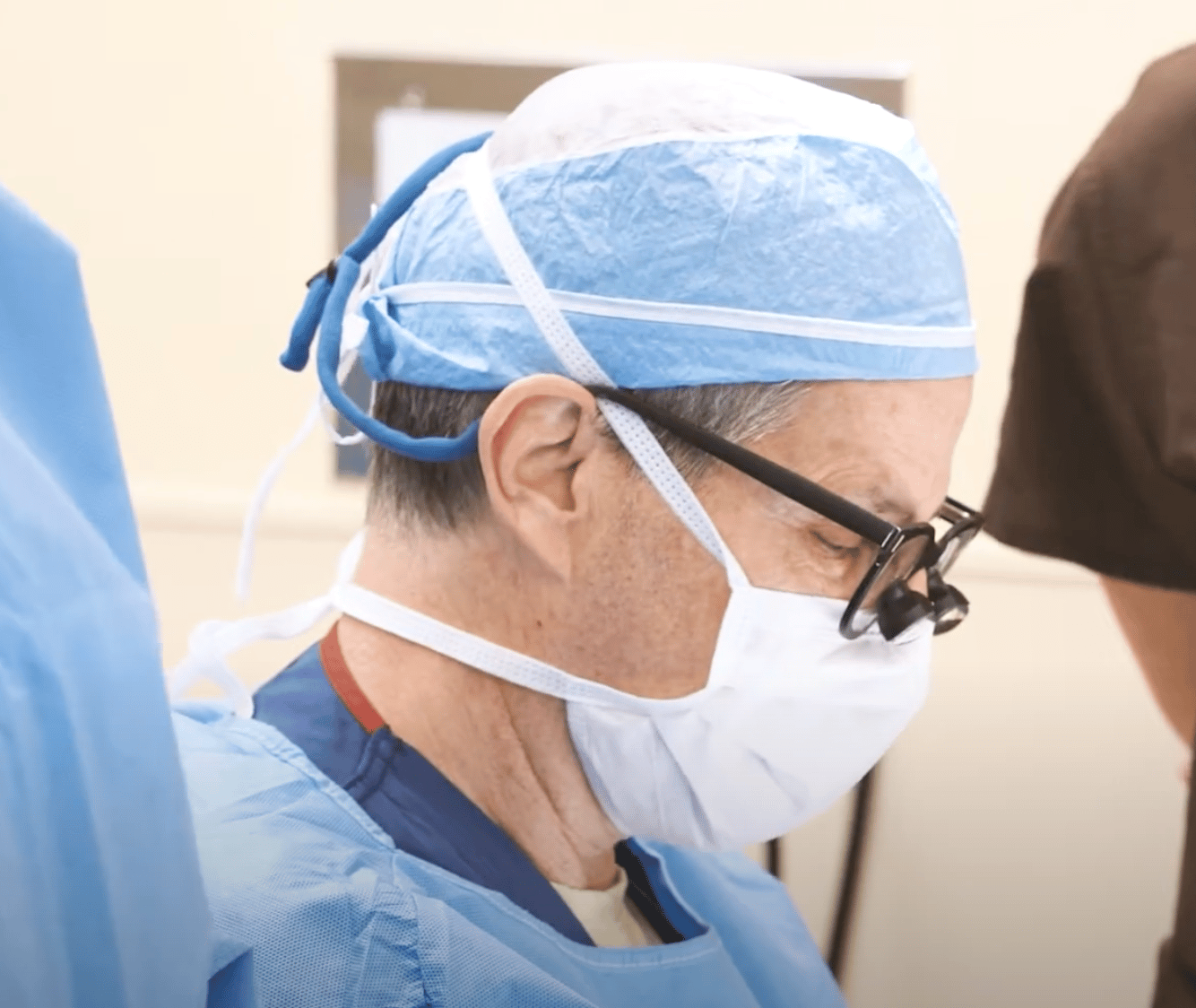Starting in your 40s, the ligaments that support the face stretch and the skin sags, causing the appearance of looseness in the neck and the jowls; facelift surgery addresses these changes.
All surgery is done in an outpatient surgery center and under local anesthesia with sedation. This is typically our preference here at W Cosmetic Surgery, as well as our Philadelphia based patients’ preference.
What is a Face Lift?
Known in cosmetic medicine as a rhytidectomy, facelift surgery is designed to restore a youthful look to the face. In many patients, the face ages more rapidly than other areas of the body.
Aging causes the face to appear worn and tired as it begins to droop, wrinkle, and deflate. The cheeks begin to sag, and the jawline becomes less defined. Visible wrinkles form in different areas of the face, especially around high-movement areas like the eyes and lips.
These cosmetic changes, though perfectly normal, can create confidence issues and hold people back from feeling as youthful as they do inside. A face lift can restore the youthful contour and re-instill confidence and vigor.
Can I Combine my Face Lift Surgery With Other Procedures?
Face lift surgery is often combined with others procedures, like a brow lift, neck lift and more. Face lifts in our practice are customized to the patient’s needs. They are not one size fits all.
Dr. Wulc will work with you to determine the best technique or combination of techniques that will work best for your and your aesthetic goals, which can include:
- Full facelift: This technique will tighten, lift, and rejuvenate the entire facial region
- Mid facelift: This is a minimally invasive procedure that lifts the cheeks and achieves natural-looking — but noticeable — results. Only at W Cosmetic Surgery can you get the WNatural Micromidfacelift – a revolutionary, minimally invasive facial rejuvenation surgery.
- Mini facelift: This technique involves tightening the neck and the jawline. It’s a great option if you are just starting to see signs of early aging.
Am I a Good Candidate for a Face Lift?
A face lift can achieve certain objectives that no other procedure can. There is no specific age range or previous cosmetic procedures that make you eligible for facelift surgery. However, our patients vary in age from 40 to the 70s.
If you are unhappy with your jowls or your jawline, you may be interested in facelift surgery.
Your health and ability to undergo the surgery are the true and only major considerations. For this reason, we recommend that you are a non-smoker in overall good health.
What Does a Face Lift Surgery Involve?
Facelift surgery procedures are performed on an outpatient basis. Under local anesthesia with sedation or general anesthesia, we hide incisions around and behind the ears and within the hairline to access the underlying structures of the face. We may perform the operation using modified traditional methods or endoscopically, as we specialize in minimally-invasive facelift techniques.
Extra fat can be removed or liposuctioned through a thin cannula, and tissue is repositioned to a more youthful location. The tissues are sutured during what is known as the SMAS (superficial muscular aponeurotic system) or the deep plane facelift.
We can simultaneously address the face and neck during the same surgery.
What Will my Recovery Timeline Look Like?
The surgery is outpatient: you are discharged home or to a hotel after you are fully awake. Initial recuperation is expected to last 10-14 days. We suggest cold compresses and a garment that you wear to prevent swelling for the first week after surgery. Over the counter pain medications and prescription medications keep you comfortable.
Facelift results are generally apparent after two weeks.Final facelift results will settle and can be seen a few months after the surgery.
WHY CHOOSE DR. WULC FOR FACELIFT?
A facial plastic surgeon in Philadelphia, Allan Wulc MD, FACS is praised by patients all over the country for his credentials, innovative surgical techniques, and record of successful procedures.
Dr. Wulc is board-certified in ophthalmology, facial cosmetic surgery, and plastic surgery, and is a diplomate of the American Society of Ophthalmic Plastic and Reconstructive Surgeons. He stands out as the only tri-state area surgeon with these accomplishments and he specializes in creating long-lasting natural results.
Schedule a Face Lift Consultation in the Philadelphia Area Today
If you’re considering a facelift, schedule a consultation with our office.
During this first office visit, we’ll:
- Review your health history, perform an examination, and discuss various options.
- Show you photographs of how patients with similar changes in appearance to yours look during their postoperative course and the results we can hope to achieve in your case.
- Tell you how you can prepare for a facelift procedure.

Discover your possibilities.
Schedule a consultation
Saturday - Sunday Closed






